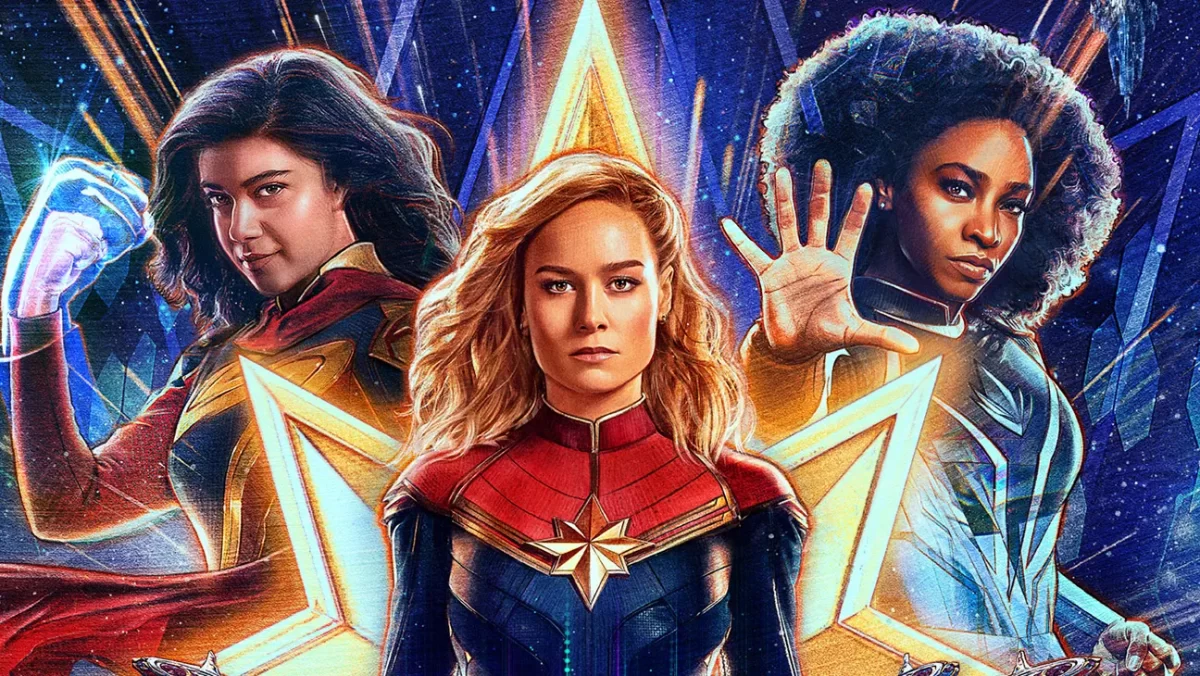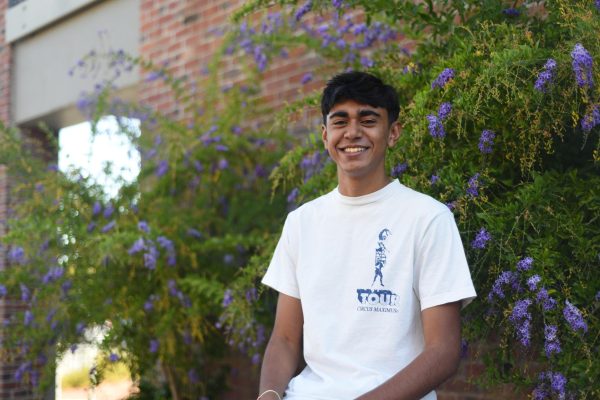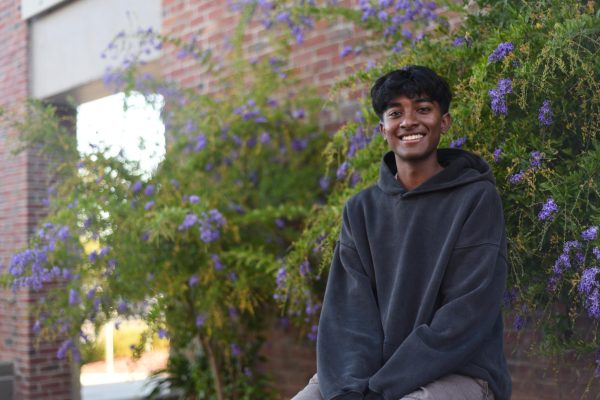In the midst of a Marvel crisis surrounding the uncertainty of the franchise’s longevity and ability to achieve success at the box office, Marvel Studios released “The Marvels” on Friday, Nov. 10. The uncertainty came about due to a trend of below-subpar ratings of many of the recent MCU projects in Phase 5, however recently the second season of the Disney Plus show “Loki” broke the trend. Hoping to replicate its success, director Nia DaCosta worked with lead actresses Brie Larson as Captain Marvel, Iman Vellani as Ms. Marvel, Teyonah Parris as Monica Rambeau and Zawe Ashton as Dar-Benn to create a sequel to the 2019 film “Captain Marvel.”
In the thick of an ongoing war between the Kree and Skrull species, the film brings attention to a vengeful Kree general named Dar-Benn who fights to restore natural resources formerly deprived from her home planet, Hala. Upon retrieving an ancient bangle, its counterpart being the bangle that gives teenage superhero Ms. Marvel (also known as Kamala Khan) her powers, Dar-Benn suddenly possesses a great amount of power, alerting SHIELD Agent Nick Fury and Captain Marvel (also known as Carol Danvers). Captain Marvel is led to Monica Rambeau and Ms. Marvel through the discovery of quantum entanglement — the idea that the Marvels’ powers are intertwined — and the three of them set out to protect neighboring planets from Dar-Benn’s vindictive onslaught.
Ranging from Captain Marvel’s mastery of light absorption to Kamala’s ability to convert light to physical matter, each of the Marvels has an ensemble of light-based powers, which work to form a powerful team. “The Marvels” brings the characters’ abilities to life with its use of CGI to differentiate each character’s powers. The film utilizes a more modern approach to create fresh and innovative action sequences, and the color grading contributes to the visual appeal. Ms. Marvel’s purple and blue glowing light-structures along with the orange and white from Captain Marvel’s fiery silhouette go hand-in-hand in the same frames to make the action scenes captivating.
Another one of the stronger aspects of the film is the chemistry between Captain Marvel, Ms. Marvel and Rambeau. Although it takes some time for each character to get into their groove in their newfound team, their energy radiates and they bounce off of each other, evident in one scene where they are learning to maneuver their powers together. The film brings more value to female roles in the MCU as a whole by bringing more power to the women in the story as is especially prevalent with this film along with other recent Marvel projects such as “Black Widow,” “She-Hulk” and “Ms. Marvel.”
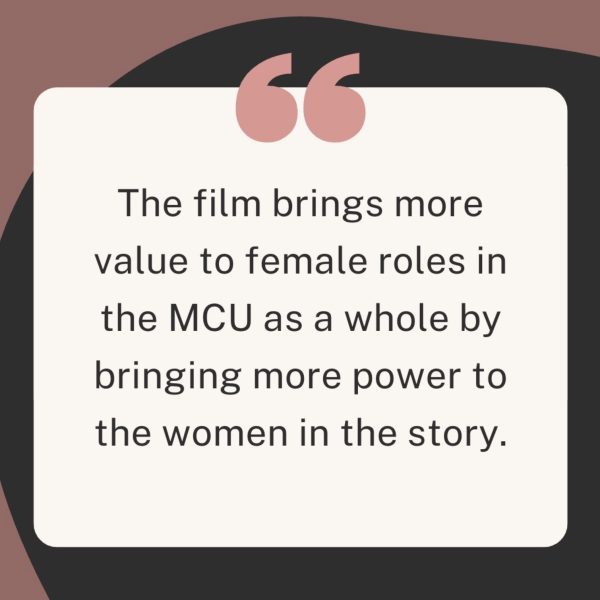
However, despite some of these strengths, “The Marvels” is a severely flawed film to the point that it can’t be saved by the cast’s performance. To a certain extent, the audience is expected to know all the previous MCU lore of the past 32 films and eight shows, since a lot of context is left out as the audience is thrown into the story. On top of that, the script attempts to cram in numerous new storylines while bringing the story of the MCU forward, in hopes of returning the MCU towards its previous glory. Overall, the film feels convoluted for the first hour, and the overall plot and motives of the characters are only revealed near the third act.
Previous MCU films such as “Thor: Ragnarok” have shown that there is a time and place for wackiness in the franchise, but this film’s attempts to replicate that are overdone and are more cringe-worthy than entertaining. The film offers forced but poorly executed scenes such as an extended sequence of cats floating in air to the song “Memory” by Barbara Streisand, as well as a Broadway-esque song-and-dance sequence featuring Korean actor Park Seo-Joon, reinforcing the idea that Marvel seriously needs to re-evaluate its sense of humor.
Dar-Benn, the antagonist, is one of the worst antagonists of the MCU in recent memory. Considering that the character doesn’t have any prior appearances in the MCU, it is already hard for her to establish herself as an intimidating villain. Due to a faulty script, her cliche one-liners and overall unclear motives, Dar-Benn is simply a one-dimensional villain with relatively weak abilities and a monotonous presence.
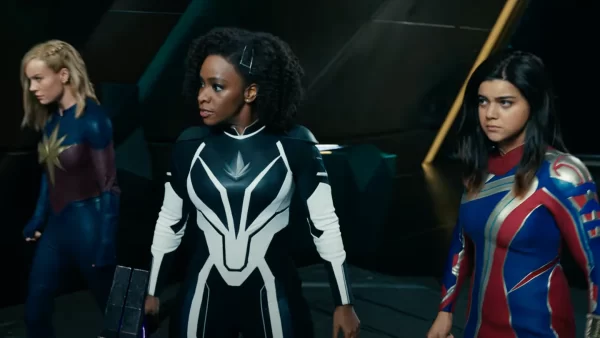
The emotional core of the plot is also lost in the messy storytelling. There is a lot to be said about Rambeau’s and Danver’s relationship following “Captain Marvel” when it comes to their family dynamic and the reunion of what was once a tight-knit relationship, but that aspect is too rushed to have any emotional impact.
The development of powerful characters and an inconclusive ending shape the film as a whole to be quite uneventful. While “The Marvels” provides prominent performances and unique visuals through fight sequences, the film takes little to no risks at a crucial point in the MCU, serving as forgettable. A weak villain, poor script and wearisome plot leave audiences believing that the leading trio deserved better.
2.5/5




